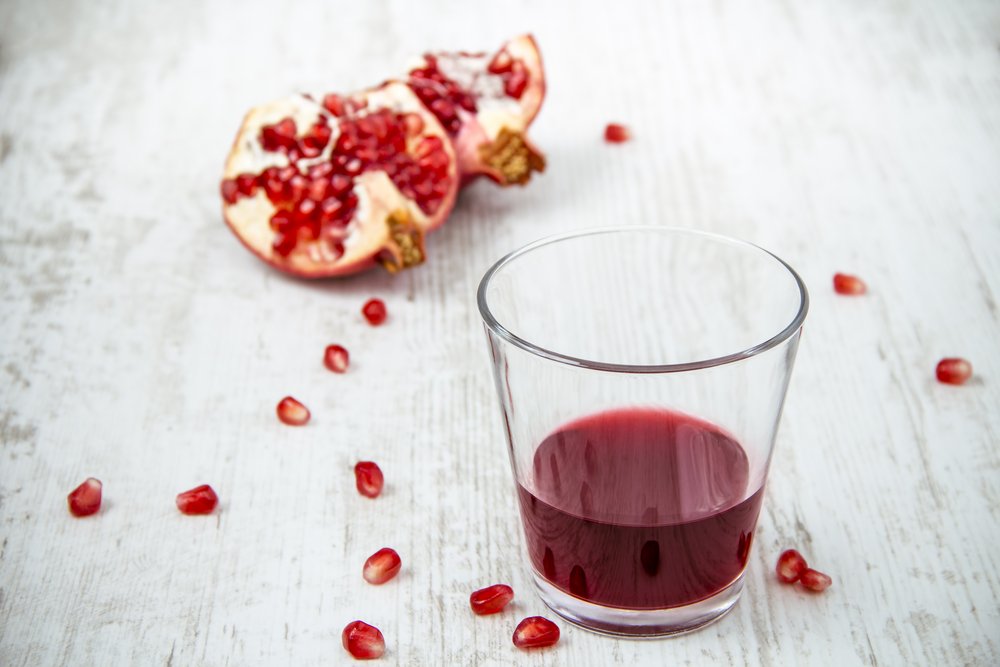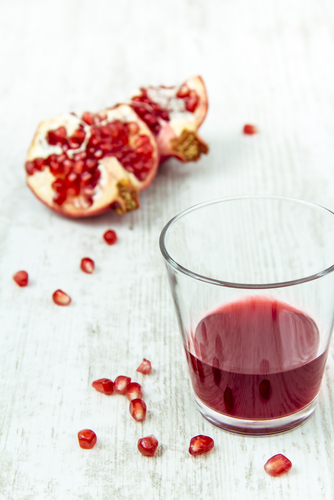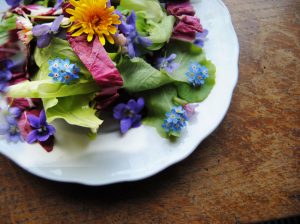3 Things to Do with a Pomegranate

The pomegranate was native to the area spanning from Iran to the Himalayas. However as far back as 6000 years it was cultivated across the Mediterranean region. Knowing its origins it makes more sense it was a pomegranate and not an apple that Eve used to tempt Adam. The beautifully glossy fruit exposes a ruby mine of delicate seductive “arils” with their brilliant red juice hidden beneath a thin layer of butter yellow membrane. However it is the very nature of the mysterious pomegranate that can make it seem a little intimidating to eat. And it’s incredibly nutritious–a true superfood. Don’t let the complexity of this fruit throw you. Instead try these three things to do with a pomegranate to enjoy its bitter, juicy goodness.
3 Things to Do with a Pomegranate:
Arils
The tiny red seeds inside the pomegranate are actually called arils. You can eat the entire aril seed and all. Some people prefer to spit them out, but frankly this makes it terribly tedious to eat a pomegranate. The arils are actually now sold in convenient cups ready to eat. But truly part of the fun is opening a pomegranate is discovering the lovely, glistening juicy morsels as you peel and quarter it. Arils can be eaten as is and have many uses in preparing various dishes. They are a lovely colourful addition to salads and salad dressings. They can also be added to sauces and gravies just before serving. Arils are an excellent decorative touch to just about any food you are serving from platters of succulent meat to sweet treats and desserts.

The Juice
Pomegranate juice is tart and lovely very similar to cranberry juice. You can purchase pomegranate juice at your local grocers and many juice stands will squeeze it fresh for you to enjoy. Pomegranate juice is an excellent source of vitamins and is also a powerful antioxidant. You can drink it as is, add it to smoothies, or blend it with other juices. It is also an ideal addition to cocktails and can be added to sparkling wines to add a tart flavour in hand with a splash of colour. In fact, authentic grenadine, the sweet red syrup used in many old school cocktails such as Singapore Slings, is actually made from pomegranate juice.
Molasses and Syrup
Pomegranate molasses is a trendy ingredient chefs have discovered in the last decade. However, it has been used in traditional Middle Eastern cuisine for centuries. It can be hard to come by and the easiest thing to do is to make it yourself. Molasses is a thicker, richer version of the syrup, but both contain the same basic ingredients. Some people simply reduce pomegranate juice on its own for about 50 minutes for syrup and 70 minutes for molasses. However, most pomegranate syrup and molasses recipes include sugar and a touch of lemon juice. You can prepare it and keep it in a well sealed jar for as long as six months in the fridge.
Of course, due to the reduction, you need quite a bit of juice to get a small amount of syrup: Four cups of juice with a half cup of sugar and squirt of lemon juice will yield 1.5 cups of syrup and 1 cup of molasses. Once you make it you can then use it on its own as a glaze for meat and poultry, drizzle it over grilled vegetables and add it to sauces as you see fit. Many people use the syrup in drinks such as iced tea, to add colour and flavour to ice water and of course in cocktails.
Pomegranates are in season from early fall until January. However the prepared arils and juice are available all year round.
Tip: An easy way to open a pomegranate without a juicy mess is to make a V cut at the blossom end or crown of the fruit and remove the blossom. Just inside you will see a little circle that can then be loosened and removed with your knife. Make four scores into the skin without penetrating the fruit within. Use your hands to pull the fruit into two pieces. If it won’t give, just score a bit.














